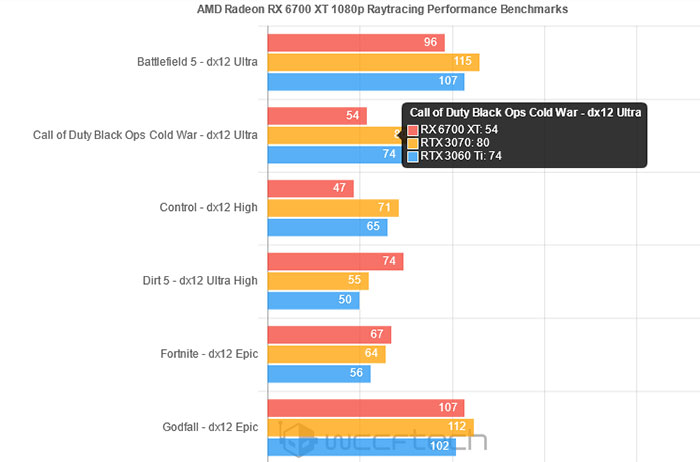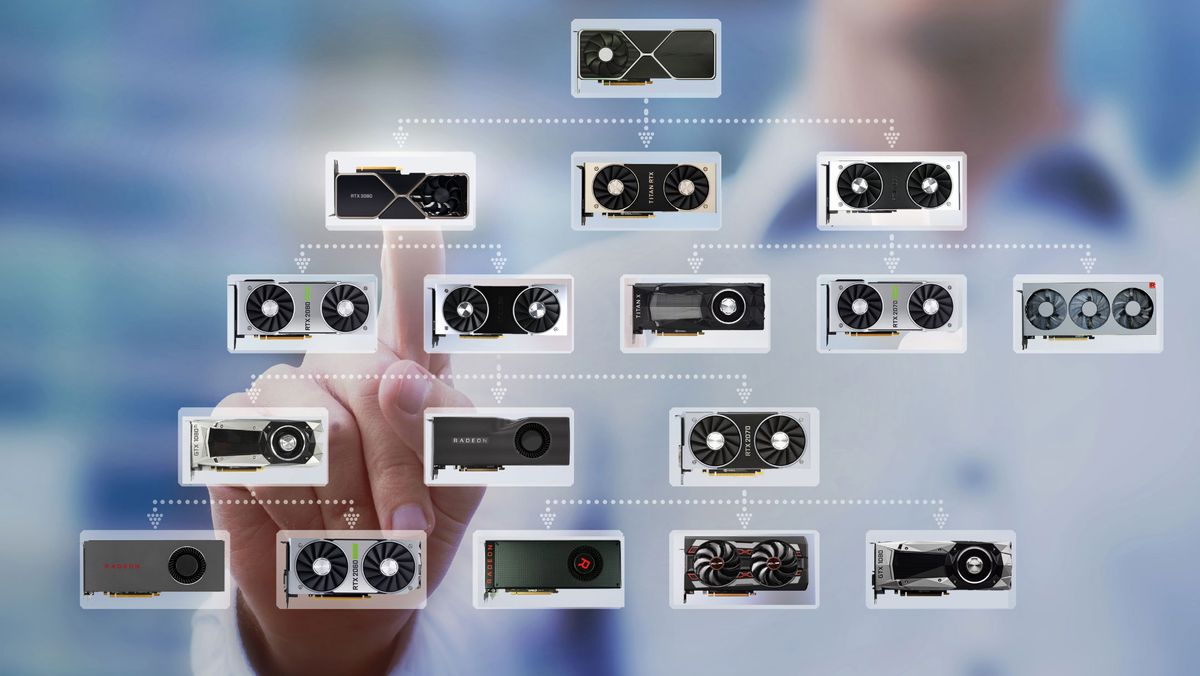

The maximum power limit can be set to +15%, but this refers to the TGP stored in the BIOS. The slider in Wattman now goes up to a very theoretical 2950 MHz, the maximum memory clock is set to 1075 MHz as a simple value (slider 2150 MHz effective, so x2). However, let’s first look at the PowerPlay defaults, which are identical for both graphics cards. One of the two BIOSes is rather moderately designed and could well correspond to the reference, the other uses a significantly higher TGP and should thus also allow higher clock rates. On what we can expect from Navi Flounder (Navi22), two very different board partner BIOSes now provide information. Thus, the GeForce RTX 3060 is nominally at a slight disadvantage. This will make usable overclocking almost completely impossible, unfortunately.

While the AIB still has room for maneuver in TGP/TDP and clock with their own Radeon cards, the GeForce RTX 3060 might have a little bit of its own, currently non-expandable power limit on its feet. RAM OC is thus rather a matter of luck and also only conditionally stable for the end customer. If you have noticed that the RAM speed is only 15 Gbps instead of 16, although Samsung 512*32 16Gbps is installed, you will find the reason in the low-priced 6-layer PCB, which no longer reliably manages the high throughputs. NVIDIA also recommends that manufacturers follow the reference layout of the GeForce RTX 3060 Ti, even though the voltage converters should probably be designed a bit more moderately in most cases with regard to the tamed and braked TBP of only 170 watts. Let’s first compare the starting point, because according to my own information from board partner circles, the clock speeds of the GeForce RTX 3060 were already finalized last week: Name

If we leave the possible availability or unavailability aside, then a Radeon RX 6700 without XT will be the most that can be found in this performance segment (if there will ever be one), because the RX 6700XT is clearly more powerful than the new Ampere card, even in the reference design with the pure rasterization, and the RX 5700XT is then EOL. With an MSRP of $329, it’s certainly not a bad offer when you compare the entry-level prices to those of a GTX 1660 Ti, which even lacked RTX features at the time. Yesterday NVIDIA, rather in the midst of it all and on the side, also unveiled the smallest of the new RTX cards with the GeForce RTX 3060 12 GB. Source: Coreteks (via YouTube) Original news from If you follow the first projections of the possible performance from January 2021 (see below), then the opponent of the RX 6700XT is clearly called GeForce RTX 3060 Ti, the small non-Ti should be clearly behind here. If that were really the case, AMD would copy NVIDIA’s implementation of the first RTX cards with A and non-A chips, which turned out to be a rather unwise decision because the buyers didn’t want it and punished it in the end. Some media assign the smaller chip to the not yet confirmed Radeon RX 6700, which is said to have 32 compute units and thus 2048 ALUs, others see the RX 6700 XT in two variants with the standard and OC models at the start. The Radeon RX 6700 XT is supposed to come in 2 chip variants with two TDP classes (ASIC A and B) – just as I had already suspected in November based on the two BIOS files we read. I had already published some of the possible key data of the upcoming Radeon RX 6700 (XT) in November 2020 and then made the whole thing more concrete in January and compared it with the upcoming GeForce RTX 3060, which is also supposed to be equipped with 12 GB GDDR6. While the launch of the GeForce RTX 3060 on 25.02.202 is visibly close, the launch of the Radeon RX 6700 (XT) is rumored for. It is able to control antialiasing with the merge of several sample into one pixel.In the meantime, the rumors about the upcoming graphics cards from NVIDIA and AMD have also increased. The result will be a depth value or a final pixel. This hadware component is taking pixel and texel information, and processing it through vector and matrix operations. The other name of this unit is raster operations pipeline. It is able to distort a bitmap image, and also to resize it, to rotate it and to place it as a texture onto a plane of a specific 3D model. This unit was a physical processor separated from the main graphics processing units. You should refer to the respective online stores for the latest price, as well as availability. This is why we prefer for the moment not to show a price. Price: For technical reasons, we cannot currently display a price less than 24 hours, or a real-time price.


 0 kommentar(er)
0 kommentar(er)
